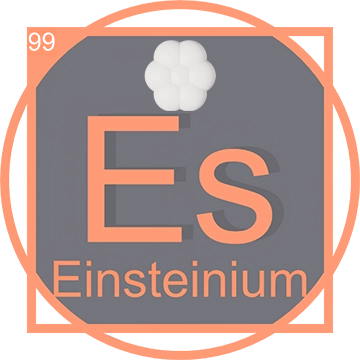Introduction to Mendelevium
Mendelevium, with the atomic number 101, is a highly radioactive and synthetic element named after the father of the periodic table, Dmitri Mendeleev. First synthesized in 1955 at the University of California, Berkeley, Mendelevium offers intriguing insights into the world of superheavy elements and their behavior. As a member of the actinide series, this element not only deepens our understanding of heavy atomic nuclei but also highlights the capabilities of modern synthetic chemistry and nuclear physics.
The Discovery of Mendelevium

Mendelevium was first identified on February 19, 1955, by a team of scientists led by Albert Ghiorso and Nobel laureate Glenn T. Seaborg at the University of California, Berkeley. It was synthesized by bombarding einsteinium with alpha particles (helium nuclei) in a cyclotron, a type of particle accelerator. This historic achievement marked a significant milestone in the exploration of transuranic elements, contributing valuable knowledge to the field of nuclear science. The successful synthesis of Mendelevium-256, which exhibited a half-life of about 77 minutes, confirmed theories about the stability of heavy nuclei and the feasibility of creating new elements that fill missing spaces on the periodic table.
Mendelevium in the Periodic Table
Located in the actinide series of the periodic table, Mendelevium is a part of the f-block elements. These elements are known for their complex electron configurations and typically display a range of unusual chemical properties due to their actinide contraction, a phenomenon reducing atomic radii and affecting chemical behavior.
Pure Mendelevium: A Closer Look at Element 101

Pure Mendelevium, a synthetic and highly radioactive element with atomic number 101, offers a unique glimpse into the complexities of superheavy chemical elements. Discovered and synthesized in minuscule quantities, pure Mendelevium is produced only under specific, controlled laboratory conditions using particle accelerators. Despite its short half-life and the challenges associated with its production, studying pure Mendelevium allows scientists to explore fundamental questions about nuclear reactions and atomic structure. The insights gained from these studies help advance our understanding of the forces that hold atomic nuclei together, potentially guiding future experiments in creating even heavier synthetic elements.
Scientific Research and Mendelevium
The production and study of Mendelevium have contributed significantly to the scientific community's understanding of nuclear structure and stability. Its synthesis has helped refine the concepts of nuclear shell model and provides a deeper understanding of the forces at play within the atomic nucleus.
Technological Applications of Mendelevium
While Mendelevium currently has no significant commercial applications, its research has paved the way for advancements in targeted cancer treatments and nuclear energy production. Scientists explore the potential of actinides like Mendelevium in various high-tech applications, including their use in future nuclear reactors and medical diagnostics.
Future Prospects of Mendelevium
As research continues, the potential applications of Mendelevium are expected to grow. Future advancements in technology and material science may unlock new uses for this element, particularly in fields requiring materials that can withstand extreme radioactive environments.
Production of Mendelevium
Mendelevium is not mined from any natural sources as it is a synthetic element. It is produced in particle accelerators through a process called neutron bombardment. Typically, lighter elements such as einsteinium are bombarded with neutrons to produce Mendelevium. This requires a highly controlled environment, usually found in high-energy physics laboratories where nuclear reactions are carefully orchestrated to achieve the synthesis of superheavy elements like Mendelevium.
Associated Resources and Elements
Since Mendelevium is synthesized artificially, there are no direct mining sites for this element. However, the production of its precursor, Einsteinium, involves nuclear reactors and particle accelerators where various other synthetic elements are also produced. These facilities often handle other actinides like americium and californium, which are critical to the synthesis of heavier elements in the actinide series.
Current Applications of Mendelevium
Currently, Mendelevium has no significant commercial applications due to its rarity, high radioactivity, and short half-life. It is primarily used in scientific research, particularly in studies aimed at understanding the properties of superheavy elements. Researchers are exploring the chemistry of Mendelevium to gain insights into the behavior of actinides and to test the limits of the periodic table.
Future Prospects of Mendelevium

The future of Mendelevium in scientific and practical applications lies in the ongoing exploration of its chemical and physical properties. As nuclear technology advances, there may be potential uses for Mendelevium in fields such as nuclear energy, where its ability to release large amounts of energy upon decay could be harnessed. Additionally, the study of Mendelevium and other superheavy elements could lead to discoveries in material science, possibly producing new materials with unique radioactive properties useful in medical imaging and targeted cancer therapies.













